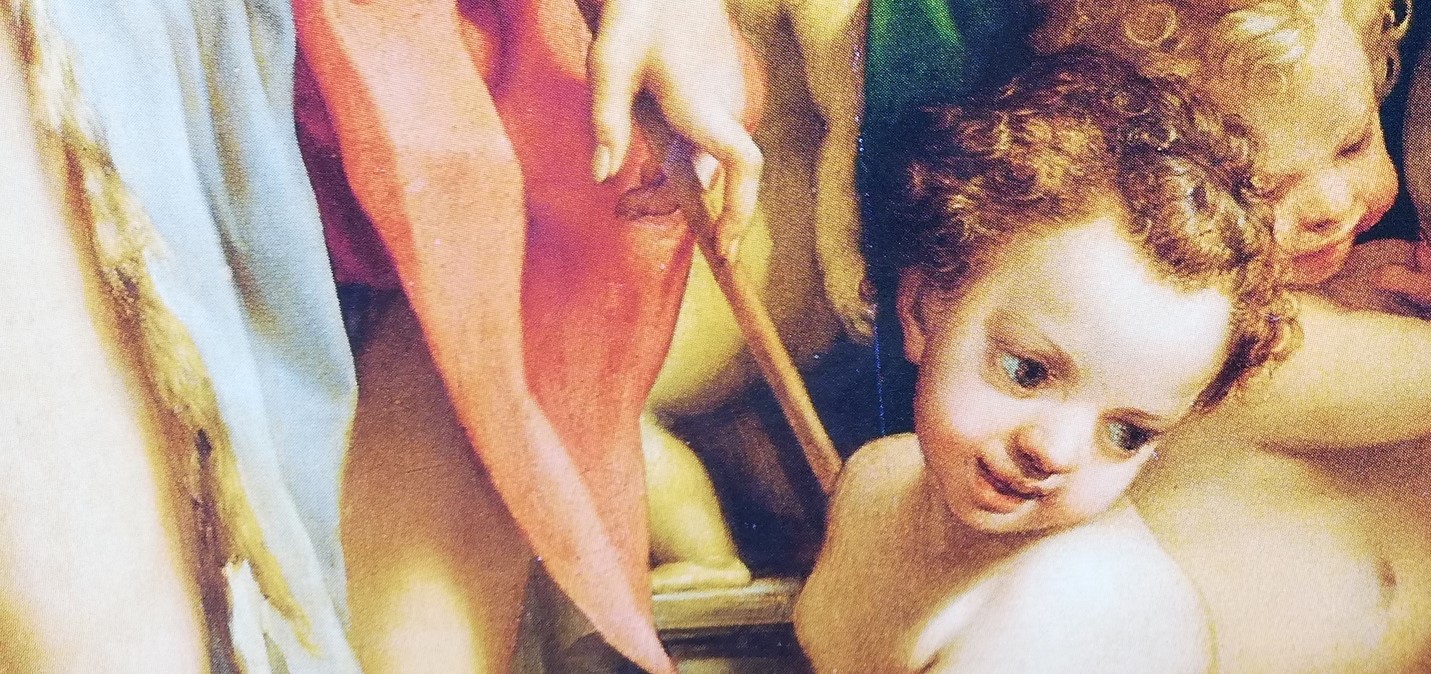Once I went on a package holiday to Germany. Our group had some spare time in Dresden. The tourists, including me, rushed to the Old Masters Picture Gallery with enthusiasm.
Passing by Correggio’s brilliant works in half an hour, I noticed the girls who had been sitting next to me on our tour bus. They looked bored. “Do you like it here?” – one of them asked me. In a second, she added: “To be honest, I expected more from the place. Madonna and child, child and Madonna – why couldn’t they paint something else?’
Great Leonardo and Many Others
The generally accepted term ‘Old Masters’ refers to all the distinguished artists who lived in European countries before the 19th century. Leonardo da Vinci, Rafael, Michelangelo Buonarroti, Peter Paul Rubens, Jan Van Eyck, Albrecht Dürer, El Greco – the Old Masters’ names are sure to ring a bell with you.
Hans Holbein, Domenico Fetti, Peter Claesz, Franc Snyders, Altobello Melloni – the list can go on – are a bit less famous. Possibly, you have never seen their paintings before. Well, that isn’t a problem – you have everything ahead of you!
What are The Works About?
Old Masters didn’t express their unique inner world. They created pieces of art to embody the highest, unified beauty.
The complicated system of Christian symbols was the main frame of reference at that time. It’s logical that the story of Jesus Christ’s birth and sacrifice constantly gave the painters food for thought. The tender image of Our Lady, and her dual role inspired them too: pious Virgin Mary, a terrestrial woman, became the mightiest of all saints.
Another clue to the understanding of the artworks lies in knowledge, albeit superficial, of the legacy of classical antiquity. It provided the people of the Renaissance with answers to the questions which could not be asked in church.
Greek and Roman mythology was, in a sense, about worldly matters. Even gods sometimes behaved like human beings in the myths – being envious of others, for example. The ancient Greeks believed that there wasn’t a chasm between spiritual and physical aspects of life. They thought a healthy body was evidence of a clear mind.
Humanism partly revived the ideal of harmony.
Well, you’ve got my message: you’d better prepare a little for a meeting with such art. Read a couple of books before visiting a gallery.
If you don’t feel up to doing that, look through some articles about the collection of paintings that belong to the particular art gallery.
You don’t need to know every Christian saint or every resident of Olympus. It’s only necessary to gain insight into classical aesthetics.
Visiting a Gallery: Tips for the Uninitiated
Pay attention to titles – they, for the most part, accurately reflect the themes or the images of old paintings.
If it seems that the Bible plots are difficult to understand, start with less complicated works – look for a landscape or a still life. Fine food can catch anyone’s imagination. The last vacation, my husband, who isn’t keen on art, and I went to see an exhibition of works painted in the 16-17th century. He liked neither belles nor angels, but he was very impressed with a piece of pie by an Old Master.
Let the art evoke emotions from you. Observe the lines, the hues, and the juxtaposition of objects without trying too hard to figure out what the painter meant. Google search will confirm or deny your spontaneous guesses a bit later.
Free your mind of stereotypes engendered by glossy magazines. Baroque standards of beauty do not coincide with ours. Pieter Paul Rubens and his contemporaries often depicted larger-bodied women. Besides their full hips, appreciate their pale skin and curly hair!
Don’t aim to visit the whole gallery. It’s much better to have fallen in love with 10-15 works, having looked at them more carefully rather than trudging from one floor to another and mumbling, ‘Oh, good heavens, I’m so tired!’
Open your heart. The paintings will fascinate you as soon as you give them a chance.

